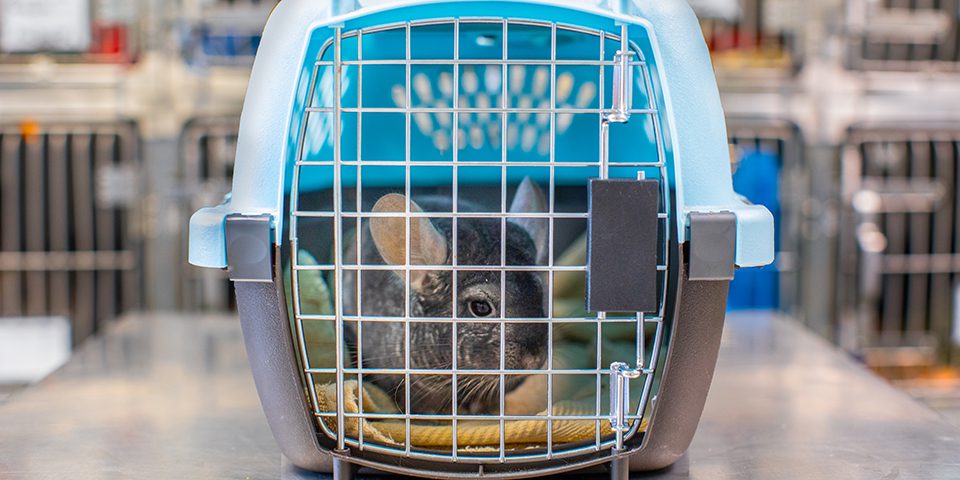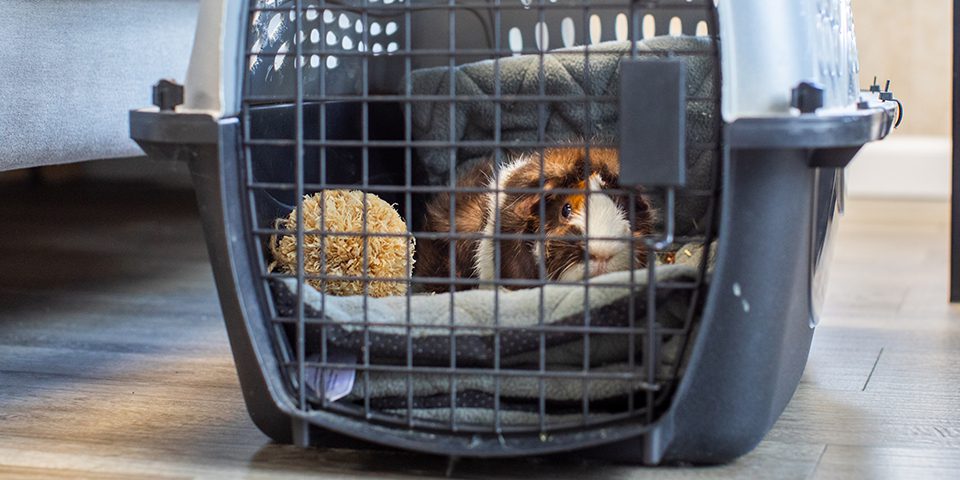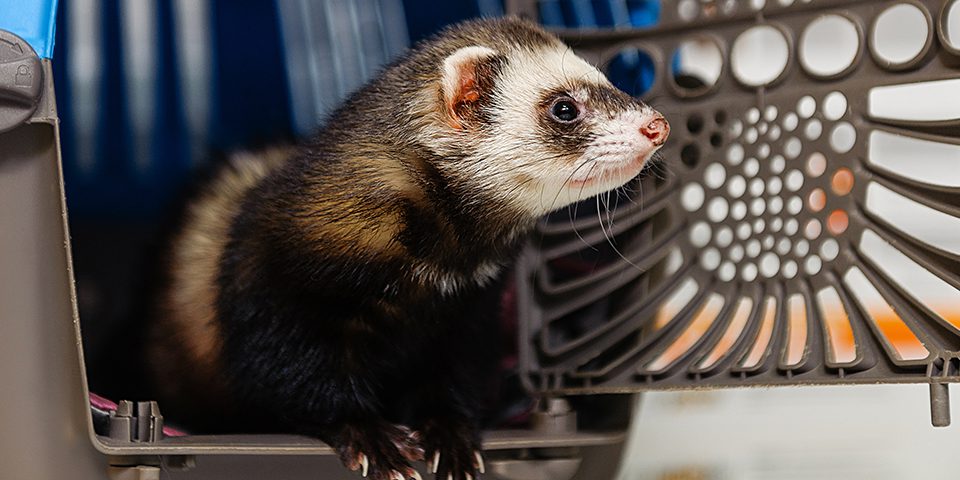Author: Kellie Hayden
Updated: August 12, 2024
Travel can stress anyone out, but it can really take a toll on small animals. In this blog post, we’ve compiled some tips that can help ensure safe and comfortable travel for your pet.
Find an Appropriate Kennel or Pet Carrier Before You Need it
Don’t be caught off guard without a carrier when you need one, especially if there’s an emergency.
When it comes to looking for an appropriate pet carrier, look for carriers that will give your pet enough space to rest comfortably. Airline Approved carriers can help protect your pet during transport from falling objects, as the wireframes sewn into some otherwise soft-shell exteriors help maintain the carrier’s shape.
Two other important factors to consider when purchasing a carrier include a structure that has ample air flow, as well as a structure that allows for feeding and watering during travel.
Get Your Pet Acquainted with Their Carrier Ahead of Time
Allowing your pet to explore their carrier on their own time can help them learn that their kennel is a safe place to rest. Always make sure to do trial runs with your pet in their carrier before actually traveling. This will help ensure that your pet can handle moderate levels of anxiety during travel.
Include Hay in Your Pet’s Carrier
Small herbivores need hay available to them at all times—make sure hay is accessible to your rabbit, guinea pig, or chinchilla during transport. Small omnivores like rats, hamsters, gerbils, and mice will also benefit from having some fortified food available in their carrier in case they get peckish.

Bring Your Pet’s Water Bottle Along
Provide water to your small pet every couple of hours while traveling. Some pet parents have had success with finding small water bottles that can attach to the outside of carriers for a more hands-free option. If you choose to go this route, make sure to detach the bottle from the carrier before moving the carrier around so the bottom of your pet’s carrier doesn’t get damp from spilled water.
Factor in the Elements
If it’s wintertime, include extra nesting material in your pet’s carrier so they can stay warm; if it’s hot outside, place some form of cold relief such as a frozen water bottle wrapped in some fleece in a corner of the carrier. Always make sure that your pet has enough room in a carrier to move away from sources of cooling or heating so they can remain comfortable.
Provide Skid-Resistant Flooring
Add a non-skid material to the floor of the carrier. This material should be something that your pet is familiar with and won’t chew on, such as a blanket or towel. This will help prevent your pet from sliding around during transport while also providing them with a source of comfort and familiarity.

Travel with a (Human) Friend
It can be helpful to travel with a friend or family member, especially if you’re driving to your destination. This will give you the opportunity to monitor your pet more closely while your friend or family member focuses on the road.
Think of Your Pet’s Needs Ahead of Time
Think about what type of travel your pet is going to experience. Your pet will have far different needs during short trips (like a veterinarian visit) compared to lengthy stays (such as staying with a pet sitter). List all your pet’s needs ahead of time so nothing is forgotten during packing.
If you’re going on a road trip with your pet, think about rest stops and hotels for each night. Are the stops you have planned suitable for your little one?
Consider Travel Restrictions
Depending on your pet’s species, travel might be restricted from state to state or country to country. For example, there may be some transport restrictions for your rabbit if RHDV2 cases are severe. Make sure you understand local, national, and international travel laws to help keep you and your little one stress-free and safe.

Consider Your Pet’s Personality
Every pet is unique and will react to traveling differently! Some pets won’t mind traveling at all, while other pets can be very anxious and will need lots of reassurance. If your pet is especially anxious or has certain medical needs, carefully consider the amount of travel they can safely handle.
